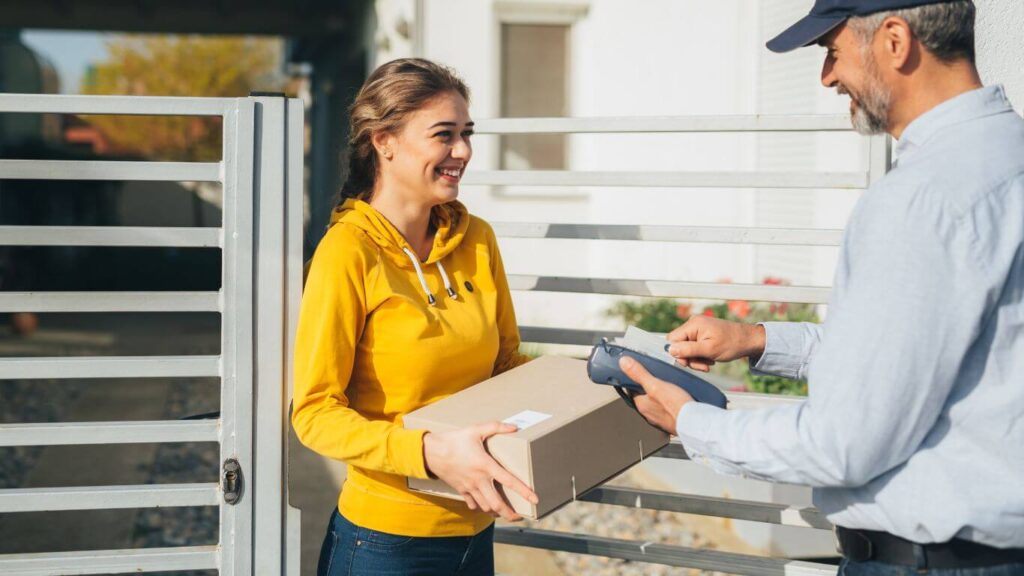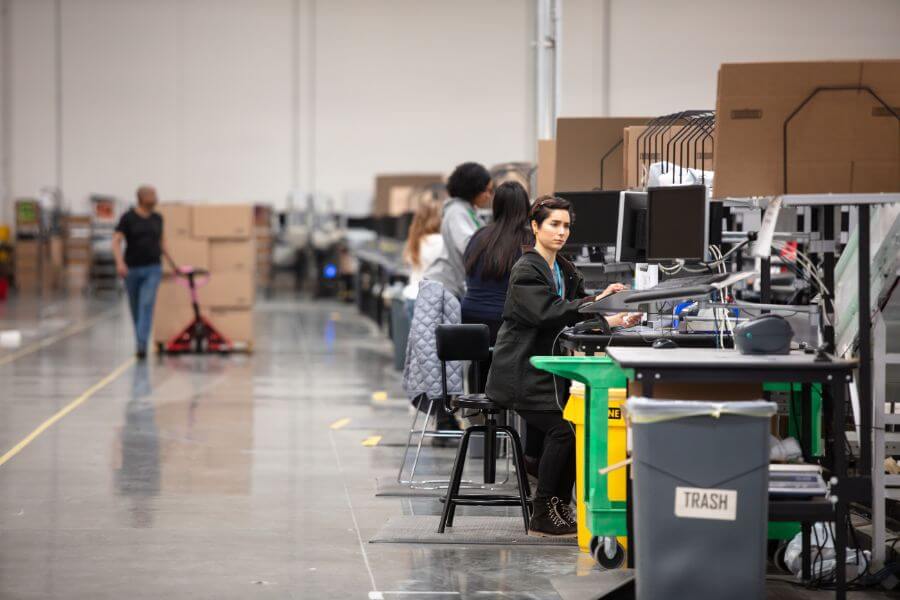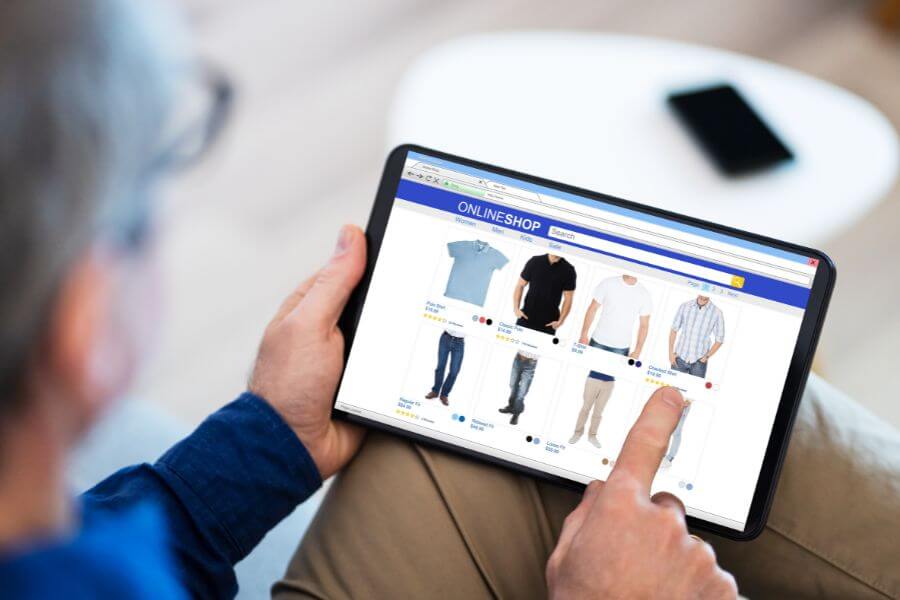The rise of e-commerce has significantly increased the demand for last-mile delivery services. The last mile delivery is the final stage of the supply chain process, where the goods are transported from the distribution center or warehouse to the end customer’s doorstep. However, last-mile delivery presents various challenges that can affect the efficiency of the delivery process, resulting in higher costs and poor customer experience. In this blog, we will provide an in-depth overview of the basics of last-mile delivery, explore common challenges, and suggest solutions to overcome them.
What is Last Mile Delivery?
Last-mile delivery refers to the final stage in the transportation process of goods, where the package or product is delivered from the nearest distribution center to its final destination, typically a residential or commercial address. It is the most crucial and expensive step in the logistics process, accounting for up to 50-55% of the total delivery cost.
The term “last mile” originated from the telecommunication industry, where it referred to the final link between the network and the user’s premises. In the e-commerce industry, it is used to describe the delivery of goods from the distribution center or warehouse to the customer’s doorstep. This final step in the delivery process is vital in ensuring customer satisfaction and loyalty.
Last-mile delivery is a complex process, involving multiple stakeholders, including retailers, e-commerce companies, delivery service providers, and logistics providers. These stakeholders work together to ensure that the product is delivered safely, on time, and at the lowest possible cost. The process involves several stages, including order processing, picking and packing, dispatch, and delivery.
How Does Last Mile Shipping Work?
With last-mile delivery becoming increasingly important in recent years and more consumers shopping online and expecting fast, reliable delivery options, it has led to a significant shift in the retail landscape, with retailers and logistics providers investing in new technologies and strategies to streamline the last mile shipping process to meet the evolving demands of consumers.
Let’s take a look at how the big logistics companies are streamlining their process and leveraging advanced technology and logistics expertise to improve the customer experience and continue to meet the growing demand for fast and reliable delivery.
1. Order Placement
Customers can place orders for products online, over the phone, or in person at a physical store. In some cases, the order may be placed with a retailer or distributor directly, while in others, it may be placed through a third-party platform such as Amazon or Instacart.
2. Order Processing
Once the order is received, it needs to be processed by the retailer or distributor. This involves picking the items from the warehouse or inventory, checking for accuracy and quality, and packaging the items for delivery. The items may be packaged together in one box or separated into multiple boxes depending on the size and weight of the order.
3. Delivery Planning
The next step is to plan the delivery route. The retailer or distributor needs to determine the most efficient route for the delivery driver to take to minimize the time and distance required to deliver all of the packages. This involves considering factors such as the addresses of the customers on the route, the size and weight of the packages, traffic conditions, and the time of day.
4. Delivery Execution
Once the delivery route is planned, the delivery driver begins the delivery process. They may use a variety of vehicles, such as vans, trucks, bicycles, or even drones depending on the size and weight of the packages and the distance between delivery locations. The driver picks up the packages from the warehouse or distribution center and drives to the first delivery location. They then deliver the package, obtain a signature or proof of delivery, and move on to the next location on the route.
5. Delivery Tracking
Throughout the delivery process, customers can track the status of their package using a tracking number provided by the retailer or distributor. This allows them to see when their package is out for delivery, when it is expected to arrive, and any updates or delays in the delivery process.
6. Delivery Completion
Once the delivery driver has delivered all of the packages on their route, they return to the warehouse or distribution center to pick up any additional packages for the next day’s deliveries. At this point, they may also return any packages that were undeliverable or returned by customers.
7. Returns Management
In the event that a customer needs to return an item, they can do so by contacting the retailer or distributor. The return process may involve scheduling a pickup with the delivery driver or dropping the package off at a designated location. The retailer or distributor then processes the return and either issues a refund or exchanges the item as appropriate.
What Are Common Last Mile Delivery Problems in 2023?
E-commerce has become an increasingly popular way for consumers to shop, with online sales expected to reach $6.5 trillion by 2023, according to Statista. However, the last-mile delivery process, which involves the transportation of goods from a warehouse or distribution center to the customer’s doorstep, remains a significant challenge for retailers, logistics companies, and delivery drivers. The last-mile delivery process is often complex and costly, with a variety of problems that can arise. From traffic congestion to the unavailability of recipients, retailers and logistics companies face a range of challenges that must be addressed to ensure successful last-mile delivery. Let’s take a look at the common last-mile delivery problems we see happening in 2023.
- Delivery Address Errors:
Incorrect or incomplete addresses can be a major problem for last-mile delivery. This can cause delays, failed deliveries, and increased costs due to the need for additional attempts or re-routing. - Traffic Congestion:
Traffic congestion is a major issue in many urban areas, which can lead to delays and missed delivery windows. This is especially problematic during peak delivery periods such as the holiday season. - Weather Conditions:
Extreme weather conditions such as snowstorms, hurricanes, or floods can make it difficult for delivery drivers to reach their destinations, or make it unsafe to do so. - Time Constraints:
Delivery drivers often have strict time constraints to meet delivery windows, and any delay can lead to missed delivery windows and customer dissatisfaction. - High Delivery Density:
High delivery density in urban areas can make it difficult for delivery drivers to navigate through narrow streets and find available parking spaces. - Theft and Damage:
Theft and damage to packages during the last mile delivery can result in customer dissatisfaction, costly returns, and damage to a company’s reputation. - Unavailability of Recipients:
Delivery drivers often encounter issues with the unavailability of recipients during the delivery attempt. This can lead to additional attempts, delays, and increased costs. - Limited Visibility:
Limited visibility of the delivery status for customers can lead to frustration and dissatisfaction. This is particularly problematic when customers are not provided with real-time updates on their delivery status. - Cost Constraints:
Delivery companies must balance the need for affordable delivery options with the cost of providing quality service. This can result in companies sacrificing quality for affordability, leading to customer dissatisfaction. - Sustainability:
As the focus on sustainability increases, customers are increasingly looking for delivery options that are environmentally friendly. Delivery companies must balance the need to reduce their carbon footprint with the need to provide cost-effective and efficient delivery services.
Last Mile Delivery Solutions to Prevent the Common Problems
To address the above common last-mile delivery problems, various solutions have emerged. These solutions aim to make the last-mile delivery process more efficient, reliable, and customer-friendly. Here are some of the latest last-mile delivery solutions that are being used by many logistics companies.
- Delivery Appointment Scheduling:
This solution allows customers to choose a specific delivery time and date that works best for them. This eliminates the need for customers to wait at home all day for a delivery, and it ensures that packages are delivered when the customer is available. - Real-Time Package Tracking:
This solution provides customers with real-time updates on the status of their delivery. Customers can track their package’s location and estimated delivery time through a mobile app or a website. This helps customers plan their day around the delivery and reduces the likelihood of missed deliveries. - Delivery Lockers:
This solution involves placing secure lockers in strategic locations, such as apartment complexes and office buildings. Delivery companies can deliver packages to these lockers, and customers can retrieve their packages at their convenience. This eliminates the need for customers to be home for the delivery and reduces the risk of packages being stolen. - Drones and Autonomous Vehicles:
These solutions involve the use of unmanned aerial vehicles, commonly known as drones, or self-driving vehicles to make deliveries. Drones and autonomous vehicles can navigate through traffic and congested urban areas, making deliveries faster and more efficient. They also reduce the risk of human error and accidents. - In-Home Delivery:
This solution involves delivery personnel entering the customer’s home to drop off the package. Customers can remotely grant access to their homes via a smart lock and monitor the delivery through a security camera. This eliminates the risk of package theft and provides a more personalized and convenient delivery experience. - Crowdshipping:
This solution involves using a network of individual drivers to make deliveries. Companies can partner with individuals who are willing to make deliveries in their spare time, such as on their daily commute or after work. This reduces delivery times and costs and provides drivers with an additional source of income.
Conclusion
Last-mile delivery is a critical component of any business that involves delivering products or services to customers. Understanding the basics and overcoming the challenges of last-mile delivery is essential to ensure customer satisfaction and retention. In this article, we have explored the fundamental concepts of last-mile delivery, including its definition, types, and key components. We have also identified some of the significant challenges that businesses face when it comes to last-mile delivery, such as traffic, weather, conditions, and unpredictable customer behavior.
To overcome these challenges, businesses must take a proactive approach, implementing strategies such as advanced route planning, real-time tracking, and collaboration with local partners. These strategies will help businesses to improve their last-mile shipping performance, ultimately enhancing customer satisfaction and retention. Furthermore, businesses must continually evaluate their last-mile delivery performance, seeking feedback from customers and making necessary adjustments to ensure that they meet the ever-evolving demands of the market.





